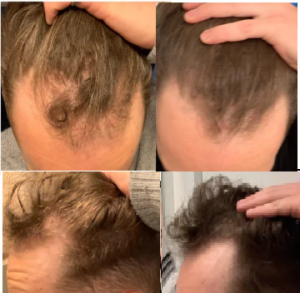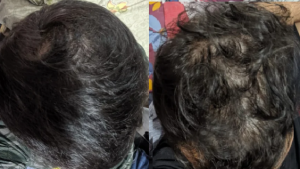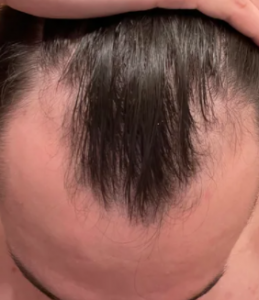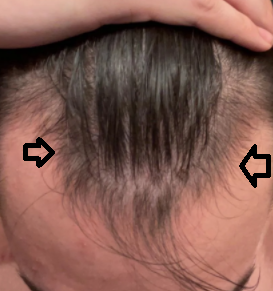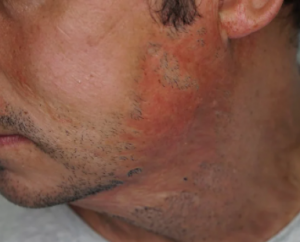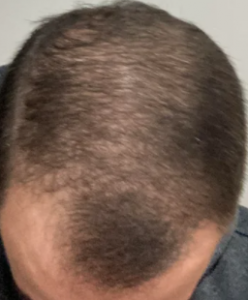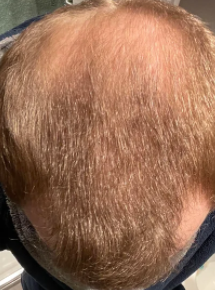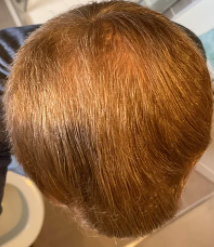J Eur Acad Dermatol Venereol
2022 Feb;36(2):286-294.
doi: 10.1111/jdv.17738. Epub 2021 Oct 25.
Efficacy and safety of topical finasteride spray solution for male androgenetic alopecia: a phase III, randomized, controlled clinical trial
B M Piraccini 1, U Blume-Peytavi 2, F Scarci 3, J M Jansat 3, M Falqués 3, R Otero 3, M L Tamarit 3, J Galván 4, V Tebbs 5, E Massana 3, Topical Finasteride Study Group
Abstract
Background: Oral finasteride is a well-established treatment for men with androgenetic alopecia (AGA), but long-term therapy is not always acceptable to patients. A topical finasteride formulation has been developed to minimize systemic exposure by acting specifically on hair follicles.
Objectives: To evaluate the efficacy and safety of topical finasteride compared with placebo, and to analyse systemic exposure and overall benefit compared with oral finasteride.
Methods: This randomized, double-blind, double dummy, parallel-group, 24-week study was conducted in adult male outpatients with AGA at 45 sites in Europe. Efficacy and safety were evaluated. Finasteride, testosterone and dihydrotestosterone (DHT) concentrations were measured.
Results: Of 458 randomized patients, 323 completed the study and 446 were evaluated for safety. Change from baseline in target area hair count (TAHC) at week 24 (primary efficacy endpoint) was significantly greater with topical finasteride than placebo (adjusted mean change 20.2 vs. 6.7 hairs; P < 0.001), and numerically similar between topical and oral finasteride. Statistically significant differences favouring topical finasteride over placebo were observed for change from baseline in TAHC at week 12 and investigator-assessed change from baseline in patient hair growth/loss at week 24. Incidence and type of adverse events, and cause of discontinuation, did not differ meaningfully between topical finasteride and placebo. No serious adverse events were treatment related. As maximum plasma finasteride concentrations were >100 times lower, and reduction from baseline in mean serum DHT concentration was lower (34.5 vs. 55.6%), with topical vs. oral finasteride, there is less likelihood of systemic adverse reactions of a sexual nature related to a decrease in DHT with topical finasteride.
Conclusion: Topical finasteride significantly improves hair count compared to placebo and is well tolerated. Its effect is similar to that of oral finasteride, but with markedly lower systemic exposure and less impact on serum DHT concentrations.
Disclaimer
The information contained in this communication from the sender is confidential. It is intended solely for use by the recipient and others authorized to receive it. If you are not the recipient, you are hereby notified that any disclosure, copying, distribution or taking action in relation of the contents of this information is strictly prohibited and may be unlawful.
This email has been scanned for viruses and malware, and may have been automatically archived by Mimecast Ltd, an innovator in Software as a Service (SaaS) for business. Providing a safer and more useful place for your human generated data. Specializing in; Security, archiving and compliance. To find out more Click Here.

